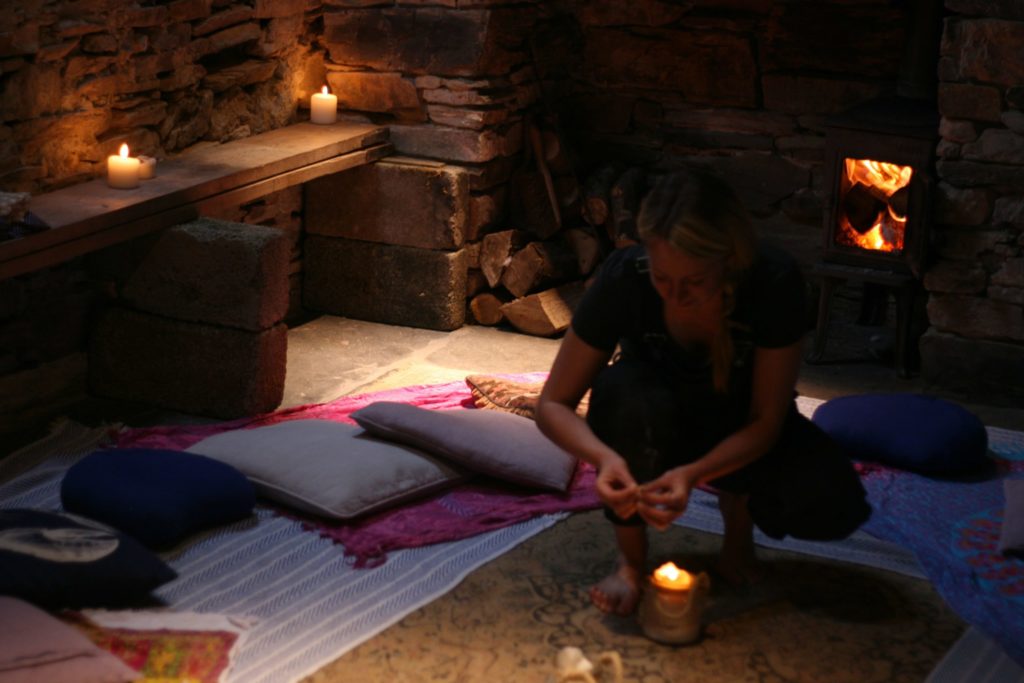
We all know meditation is good for us. It is a practice we can all do at home very easily, supported by numerous free apps, online courses, classes and guided audios. So then, why do we find it so hard to embed a daily meditation routine?
Without conscious awareness, we might convince ourselves that we are too busy, we can’t be bothered or there are much more important things to do than to meditate. But is that really true? Or is it our protective little voice of ego keeping us from doing the very thing we most need to do?
My reflections, and gathered research, on why the ego functions this way, and why it so often “protects” us from the very thing that we seek, will be shared in a post in the next couple of weeks but for now let’s consider our own conscious choices.
I hope the following reflections will help you, if you’ve ever wondered how to embed a daily meditation routine.
-
Start where you are, do what you can
So often we create mountains for ourselves to climb but as the saying goes ‘one conscious breath is a meditation’. Can you find five minutes before climbing into bed at night, or two minutes before getting up in the morning, to sit quietly with yourself, check-in and breathe? Meditation is free and always accessible, we just need to show up for ourselves. You don’t have to do 2 hours of meditation a day to embed a routine. Start small with just 2 minutes and build up from there.
-
Play with your practice
There are many different meditation approaches and practices; there is no ‘one way’ as I so often remind you. Play with your daily meditation routine, fill your tool kit with a number of practices, so that no matter how busy your day might be, there will always be something you can make time for. (If you’re unsure where to start, or what the heck I even mean by this, check out the Discover Meditation Course).
-
See it as a treat, not a chore
True meditation is surrender – of thought, grasping, griping, of tension and control – it is deep relaxation, effortless flow, being with and accepting yourself as exactly who, what and where you are. What – a – relief! What if you reframed meditation in your mind to see it as a daily treat not a chore. See it as sacred time for you to just be. See it as vital for your mental and physical health. See it as a loving choice for you and others. See it as welcome relief.
-
Give it time
In our fast-paced world, where we want instant gratification and tangible rewards immediately, it can be hard to make time for meditation, which offers much slower, subtler benefits. The deep, internal shifts a meditation practice facilitates changes our whole experience of living. Those deep and lasting changes don’t happen over night. Your neural pathways and your nervous systems conditioning isn’t permanently changed after one meditation sitting – it takes time and practice. I see it like a big ship leaving the dock; it takes effort and time to start with but once you find your rhythm, you are sailing.
-
Life is a meditation
Meditation, as a spiritual practice, is something we live and breathe throughout our daily lives, not just as a stand-alone, closed eye practice. Letting go, embodying presence, gratitude, trust, compassion and curiosity throughout all of our daily doings, not just in our closed eye practice, is living meditation, and the very reason why we show up for it in the first place; to live in peace. Having said this, it doesn’t then mean we don’t then have to show up for a more formal practice. There is so so SO much repair and restoration that happens when the body and mind are in a conscious state of deep calm and acceptance. For the vast majority of us, who aren’t the embodiment of presence 24/7, it is undeniably and inexcusably helpful to simple get still and quiet; to meditate.
-
The power of ritual
A ritual is a conscious, deliberate set of actions that are performed in embodied presence. Creating a daily ritual for your meditation practice (light a candle, uses smells, burn sage or palo santo, blow the candle our when you’re done) can help embed a routine – something that has become more automated and becomes part of what we do each day without too much effort.
